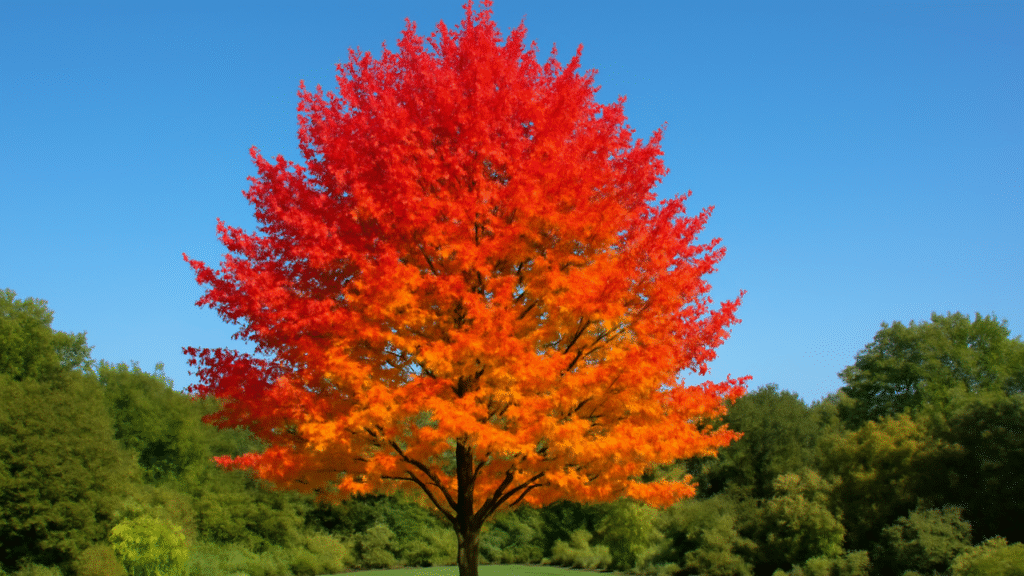
Cherokee Sweetgum Tree: Expert Care Tips for Thriving Growth and Vibrant Fall Foliage
Table of Contents
Toggle🏡🌳 Why Choose the Cherokee Sweetgum Tree for Your Yard? 🌳🏡
If you’re looking for a tree that combines beauty, functionality, and ease of care, the Cherokee Sweetgum Tree should be at the top of your list! 🌟 Here’s why: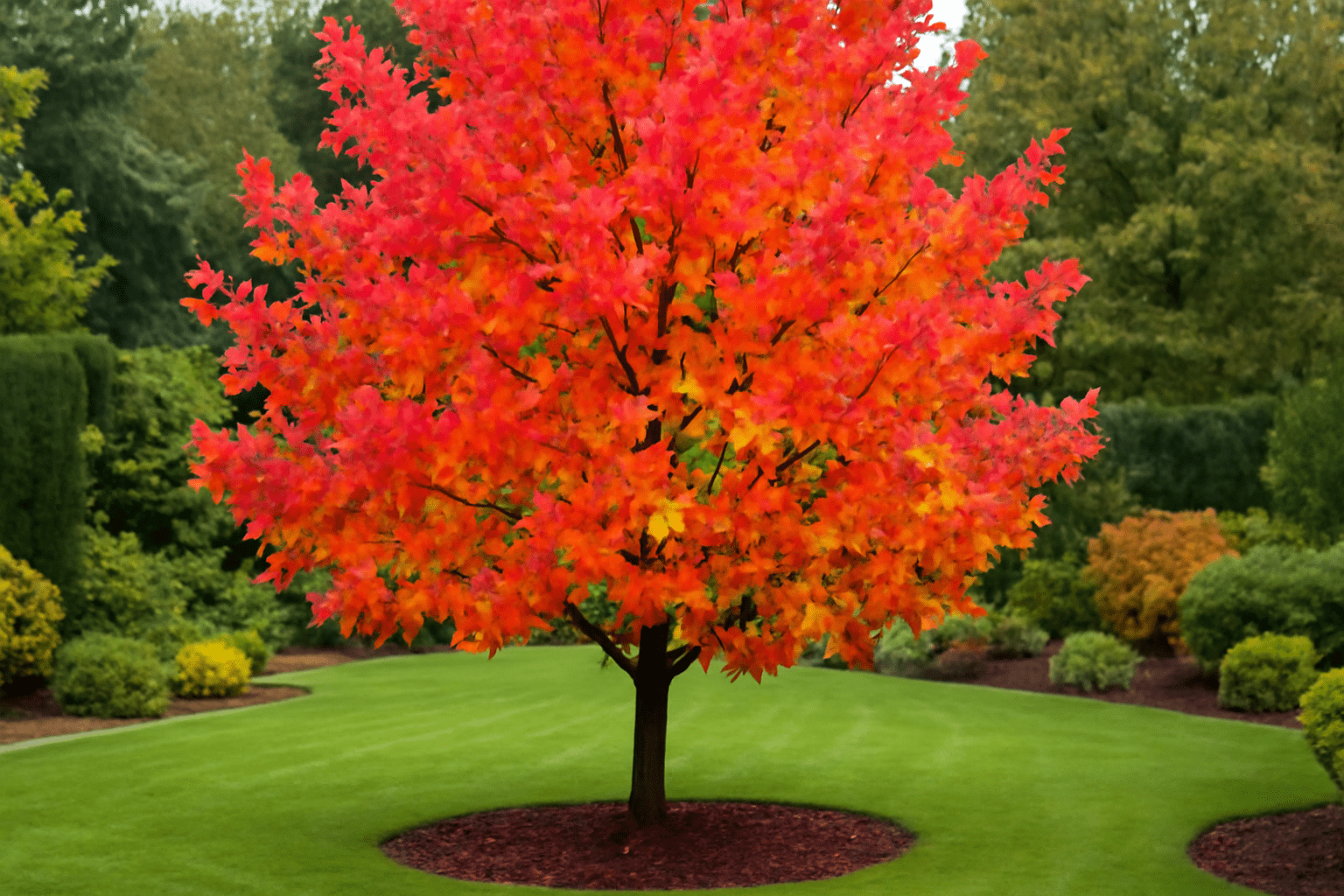
🍁 1. Stunning Fall Colors 🍁
One of the Cherokee Sweetgum Tree’s most notable features is its breathtaking fall foliage 🍂. During autumn 🍃, the tree’s leaves transform into a vibrant mix of reds, oranges, and yellows 🍁, creating a show-stopping display in your yard 🌳. If you want a tree that provides year-round interest 🌸, this tree is a perfect choice, especially in the cooler months ❄️!✨ 2. Unique Star-Shaped Leaves ✨
The Cherokee Sweetgum Tree boasts distinctive star-shaped leaves 🌿 that add a touch of texture and elegance ✨ to any landscape 🏡. These leaves provide a striking contrast to the more common, rounded tree leaves 🍃, making your garden stand out 🏡. Whether you’re aiming for a modern look 🌱 or a classic feel 🌷, the Sweetgum’s unique leaves are sure to impress 🌟.🌿 3. Space-Saving, Large-Scale Beauty 🌿
While this tree can grow up to 60 feet tall 🌳, it doesn’t spread too far wide 🏠, making it ideal for larger yards 🏡 or even suburban settings 🌳 where space is a concern. It offers shade 🌞, beauty 🌸, and structure 🏗️ without overwhelming your landscape 🏞️. If you’re looking for a tree that grows vertically 🌱 and provides excellent shade 🌳, the Cherokee Sweetgum is the perfect pick!🌍 4. Environmental Benefits 🌍
The Cherokee Sweetgum Tree is also an eco-friendly choice 🌿. It plays a crucial role in soil erosion prevention 🌱 and offers a natural habitat for wildlife 🦋, including birds 🦜 and insects 🐝. So not only will it enhance your garden 🌷, but it also contributes to a healthier environment 🌳 around you 🌍.🌱 5. Low-Maintenance Care 🌱
While it may look elegant 🌿, this tree is relatively easy to care for 🌱. The Cherokee Sweetgum Tree can tolerate a variety of soil types 🌾 and is fairly drought-tolerant once established 💧. With the right planting 🌱 and periodic care 🌿, it will thrive with minimal effort, making it a hassle-free addition to your landscape 🏡. The Cherokee Sweetgum Tree is more than just a tree—it’s an investment in your yard’s beauty 🌷 and environmental health 🌍. Whether you’re looking to add vibrant fall colors 🍁, provide shade 🌞, or create a low-maintenance focal point 🌿, this tree ticks all the boxes ✔️. 🌳✨🌱🌳 Planting Your Cherokee Sweetgum Tree 🌳🌱
Planting a Cherokee Sweetgum Tree correctly is key to ensuring its healthy growth 🌿 and longevity 🌳. Here’s your step-by-step guide to getting it off to a great start in your yard 🏡: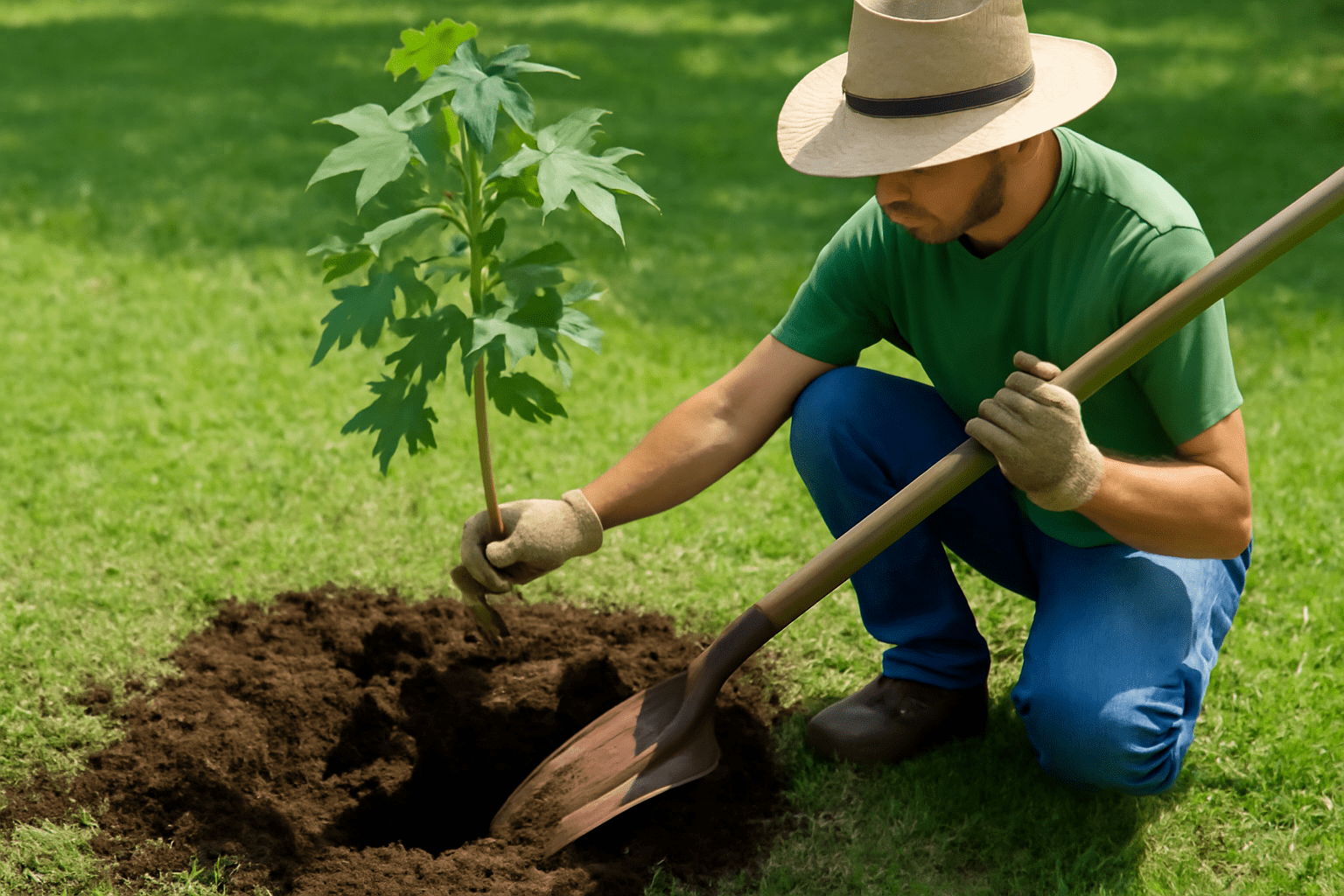
🏡🌞 1. Choose the Right Location 🌞🏡
The Cherokee Sweetgum Tree needs plenty of space to grow 🌳 and thrive 🌱. Consider the following when selecting the perfect spot 🌞:- 🌞 Sunlight: This tree loves full sun! Aim for a location where it can get at least 6 hours of direct sunlight daily 🌅. The more sunlight it receives, the more vibrant its fall colors 🍂 will be.
- 🌳 Space: Keep in mind that this tree can grow up to 60 feet tall 🌳 and 20–30 feet wide 🌿. Choose a spot with enough room for the tree to spread out without crowding nearby structures 🏠 or other plants 🌻. Avoid planting it too close to buildings or power lines ⚡.
- 🌿 Soil: It thrives in well-draining soil 🌱, ideally slightly acidic to neutral 🌾. Check your soil’s drainage by digging a hole ⛏️ and filling it with water 💧—if it drains within an hour, you’re good to go 🌿.
⏰🍁 2. Best Time to Plant 🍁⏰
For the best results 🌱, plant your Cherokee Sweetgum Tree in either spring 🌸 or early fall 🍁. These seasons provide moderate temperatures 🌡️ and more rainfall 🌧️, which help the tree establish roots before the harsher summer or winter conditions 🌬️.🛠️🌳 3. How to Plant: A Simple Step-by-Step Guide 🌳🛠️
Follow these easy steps to plant your tree properly 🌳:- ⛏️ Dig the Hole: Dig a hole that’s 2–3 times the size of the root ball 🌱. This gives the roots plenty of space to spread out 🌳.
- 🌱 Prepare the Tree: Gently remove the tree from its container 🏠. If it’s in a burlap sack 🧑🌾, make sure to remove any bindings around the roots 🌿.
- 🌳 Position the Tree: Place the tree in the hole ⛏️, ensuring the top of the root ball is level with the surrounding soil 🌱. This will prevent the roots from sitting too deep 🌱 or too shallow 🌳.
- 🌿 Backfill the Hole: Fill the hole with the soil you removed 🌿, making sure to pack it down gently as you go 🌱. Avoid air pockets 🌀, which can hinder root growth 🌿.
- 💧 Water Well: Once the tree is in place 🌳, water it deeply 💦. This helps settle the soil and ensures the roots have adequate moisture 💧 to begin establishing themselves 🌱.
- 🌱 Mulch Around the Base: Add a 2-3 inch layer of mulch 🌾 around the base of the tree 🌳 to help retain moisture 💧 and prevent weeds 🌿 from growing. Keep the mulch away from direct contact with the trunk 🌳 to avoid rot 🍂.
🌧️🌱 4. Post-Planting Care 🌱🌧️
After planting 🌱, it’s essential to monitor the tree’s progress for the first few months 🌳:- 💧 Watering: Keep the soil moist but not soggy 💦, especially during the first growing season 🌱. Deep waterings once a week should be enough 💧, but adjust based on rainfall 🌧️ and temperature 🌞.
- 🌱 Check for Growth: Look for new buds 🌸 and leaves 🍃 during the growing season 🌿. If the tree doesn’t show signs of growth 🪴, check for water 💧 or soil issues 🌱.
💦🌳 Watering and Irrigation for Healthy Growth 🌳💦
Proper watering is one of the most important factors in ensuring your Cherokee Sweetgum Tree thrives 🌱. While this tree is relatively low-maintenance 🌿, giving it the right amount of water at the right time 💧 can make all the difference in its overall health and growth 🌳. Here’s everything you need to know about watering your tree for optimal results 🌱.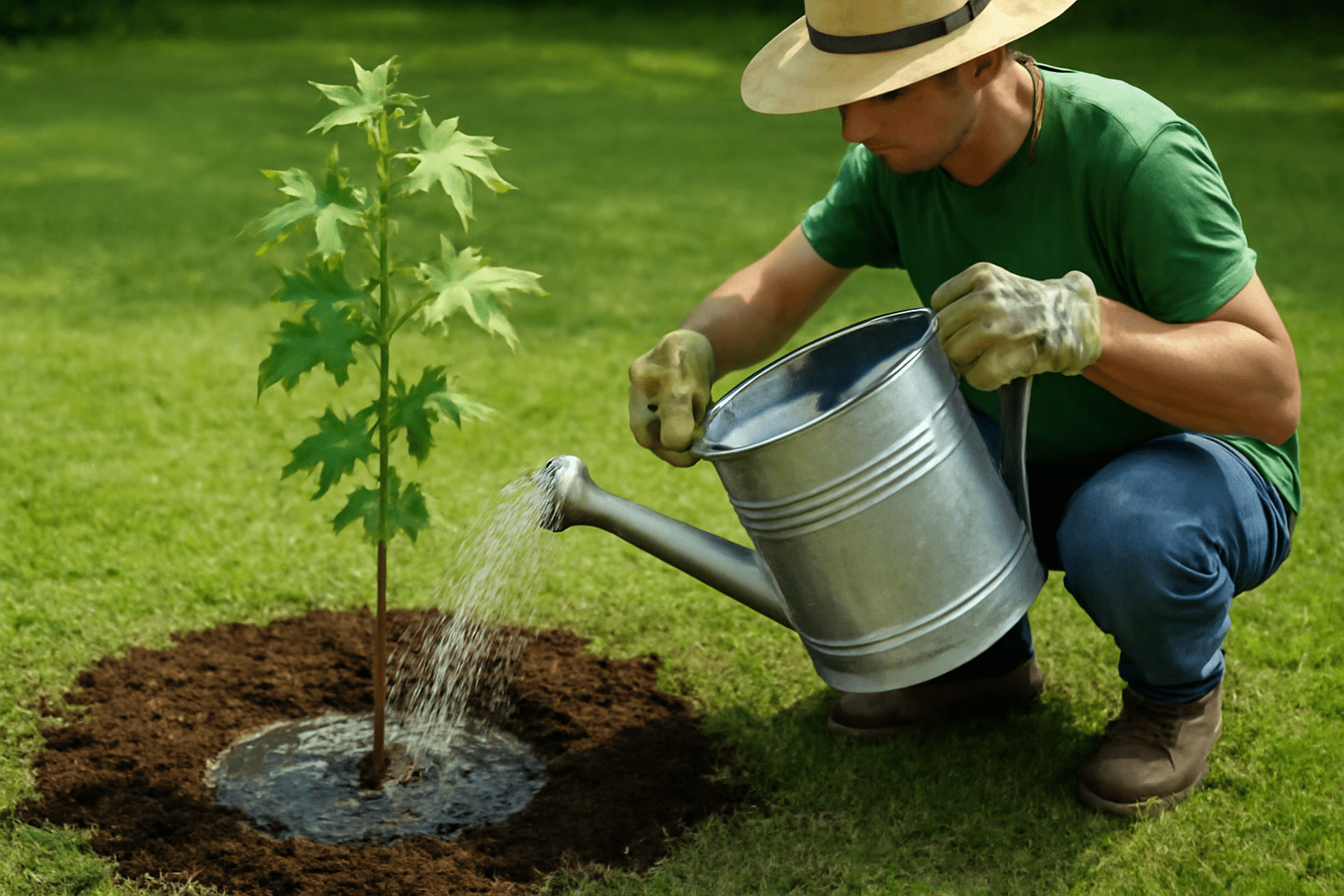
🌱💧 1. Watering Young Trees 💧🌱
When your Cherokee Sweetgum Tree is newly planted 🌳, it’s essential to keep the soil consistently moist 🌱, especially during the first few months. Young trees have shallow roots 🌿 and need more frequent watering to establish themselves 🌳.- 🕒 Watering Frequency: Water your tree once a week during dry spells 🌞. If it rains 🌧️, you may be able to skip a week 🌱.
- 💦 Amount of Water: Ensure the water reaches deep into the soil 🌱, encouraging deep root growth 🌿. Water until the ground is moist at least 6-8 inches deep 🌳.
🌳💧 2. Watering Mature Trees 💧🌳
Once your Cherokee Sweetgum Tree is established 🌱 (typically after 1-2 years), it becomes more drought-tolerant 💧. However, it still needs deep watering 🌿, especially during dry spells in the summer 🌞.- 🕒 Watering Frequency: Water mature trees once every 2 weeks during hot months 🌞.
- 💦 Deep Watering: Rather than frequent shallow watering 💧, give your tree a deep watering 🌱 to encourage its roots to grow deep into the soil 🌳. This helps the tree survive drought conditions in the long run 🌞.
- 🌱 Check the Soil: To determine if it’s time to water 🌱, stick your finger 2-3 inches into the soil 🌾. If it feels dry, it’s time to water 💧. If it’s still moist, wait a few more days 🌿.
⚖️ 3. Signs of Overwatering and Underwatering ⚖️
Both overwatering and underwatering can harm your Cherokee Sweetgum Tree 🌳, so it’s crucial to strike the right balance ⚖️.🌿 Signs of Overwatering 🌿:
- 🍃 Yellowing leaves 🍂
- 🌱 Wilting or drooping despite wet soil 🌧️
- 💧 Root rot (which can be detected by a musty smell or discolored roots when inspecting the tree 🌱)
🌱 Signs of Underwatering 🌱:
- 🍂 Dry, crispy leaves 🍃
- 🌱 Stunted growth 🪴
- 🍁 Leaves turning brown and falling prematurely 🍂
💧⏲️ 4. Irrigation Systems for Convenience ⏲️💧
To make watering easier and more efficient 🌱, consider installing an irrigation system that suits your needs 💧:- 💦 Drip Irrigation: A drip system delivers water directly to the root zone 🌳, minimizing water waste 💧 and ensuring deep, consistent watering 🌱.
- 💧 Soaker Hoses: These hoses slowly release water 🌿 along their length, perfect for watering large areas around your tree 🌳 without wasting water 🌾.
- 🌊 Sprinkler Systems: If you have a sprinkler system 🌧️, make sure it’s set to water deeply 💦 and infrequently 🌱. Shallow watering encourages shallow root growth 🌿, making your tree more vulnerable during dry spells 🌞.
🌞 5. Watering Tips for Best Results 🌞
- 🌅 Morning Watering: Watering in the early morning ensures that the water reaches the roots 🌳 before the heat of the day 🌞. It also reduces the risk of fungal diseases 🍄 that can develop with wet foliage overnight 🌙.
- 🌱 Avoid Wetting the Foliage: Try to water the base of the tree 🌳 rather than soaking the leaves 🍃. Wet foliage can promote disease 🍂 and stress on the tree 🌿.
✂️🌳 Pruning and Maintenance for a Healthy Tree 🌳✂️
Pruning and regular maintenance are essential to keeping your Cherokee Sweetgum Tree healthy 🌿, strong 💪, and looking its best 🌳. Proper pruning encourages good structure 🏗️, removes damaged branches 🌿, and promotes overall growth 🌱. Let’s walk through the essential steps for maintaining your tree 🌳.
⏰✂️ 1. When to Prune ✂️⏰
The best time to prune your Cherokee Sweetgum Tree 🌳 is late winter to early spring 🌱, just before the new growth starts 🌿. Pruning during this time helps minimize stress 🌿 and allows the tree to heal quickly 💪, ensuring a healthy growing season 🌱.- 🍂 Avoid pruning in the fall: Pruning too late in the season can encourage new growth 🌱 that might not survive the winter ❄️.
- 🌸 Spring Pruning: Pruning during early spring 🌸 helps the tree grow stronger 🌳 and fuller by removing dead or weak branches 🍃 before the active growing season begins 🌞.
🛠️ 2. Tools You’ll Need 🛠️
Having the right tools 🛠️ makes pruning easier 🌱 and ensures you don’t damage your tree 🌳 in the process.- ✂️ Pruning Shears: Ideal for small to medium-sized branches (under 1-inch thick) 🌿.
- 🌿 Loppers: Perfect for thicker branches up to 2 inches in diameter 🌳.
- 🪚 Pruning Saw: Useful for cutting larger branches 🌳.
- 🧤 Gloves: To protect your hands from sharp branches 🌿 or any splinters 🌱.
🌱✂️ 3. How to Prune ✂️🌱
Follow these simple steps 📝 to prune your Cherokee Sweetgum Tree 🌳 and maintain its shape and health 🌿:- 🍂 Remove Dead or Damaged Branches: Start by cutting off any dead, diseased, or damaged branches 🌱. These can weaken the tree 🌳 and make it more vulnerable to pests 🦠 and diseases 💧. Cut them back to the nearest healthy branch 🌿 or the trunk 🌳.
- 💧 Remove Suckers and Water Sprouts: Water sprouts 🌱 (small, upright shoots) and suckers 🌿 (growth near the base) can sap energy from the tree 🌳 and prevent proper growth 🌱. Trim them regularly to keep the tree’s energy focused on the main branches 🌳.
- 🌳 Shape the Tree: Prune to maintain a balanced, symmetrical shape 🌱. Remove any crossing branches that could rub together, as this can lead to damage 🍃 and invite pests 🦠 or disease 🍄. Aim to create an open canopy 🍃 that allows sunlight 🌞 to reach all parts of the tree 🌳.
- 🍃 Thin the Canopy: If the canopy is too dense 🌳, selectively remove a few branches to improve air circulation 🌬️. This helps prevent fungal diseases 🍂 by allowing better airflow 🌿 and light penetration 🌞.
⚖️ 4. How Much to Prune ⚖️
It’s important not to over-prune your Cherokee Sweetgum Tree 🌳. A good rule of thumb is to never remove more than 25% of the tree’s canopy 🌿 in a single year. Over-pruning can cause unnecessary stress 🌱 and slow the tree’s growth 🌳.- 🔪 Moderation is Key: Focus on removing only the necessary branches 🌿—dead, diseased, or poorly placed branches 🌳.
🌿💧 5. Post-Pruning Care 💧🌿
After pruning ✂️, it’s crucial to give your tree 🌳 some extra care 💧:- 💦 Water the Tree: Pruning can stress the tree 🌳, so make sure to water it well 💧 after trimming ✂️. Deep watering 💧 helps the tree recover and establishes strong new growth 🌱.
- 🦠 Monitor for Pests: After pruning 🌳, keep an eye on the tree for signs of pests 🐜 or disease 🦠. Fresh cuts 🌿 can attract insects 🐞, so it’s essential to act quickly if any problems arise 🌿.
- 🌱 Mulch: Add a fresh layer of mulch 🍂 around the base of the tree 🌳 to retain moisture 💧 and keep the soil temperature stable 🌡️.
🚫✂️ 6. Common Pruning Mistakes to Avoid ✂️🚫
- 🌳 Topping the Tree: Never “top” a tree by cutting off the main leader (top) 🌳 or cutting large branches drastically 🌿. This can lead to weak growth 🌱 and invite diseases 🍄.
- 🌿 Pruning Too Much: Removing too many branches at once 🌱 can stress the tree 🌳. Always prune moderately 🌱 and gradually over time 🌿.
- 🪚 Using Dull Tools: Dull pruning tools ✂️ can damage branches 🌿 and leave jagged cuts 🪓, making the tree more susceptible to infections 🍂. Ensure your tools are sharp 🔪 before each pruning session.
🌿🌳 Fertilizing the Cherokee Sweetgum Tree 🌳🌿
Fertilizing your Cherokee Sweetgum Tree 🌱 is essential to ensure its healthy growth 🌳 and vibrant foliage 🍃. While this tree can thrive in various soil conditions 🌾, providing the right nutrients at the right time 💧 can make all the difference in its overall health 🌿 and appearance 🌳. Here’s everything you need to know about fertilizing your tree for optimal results 💚.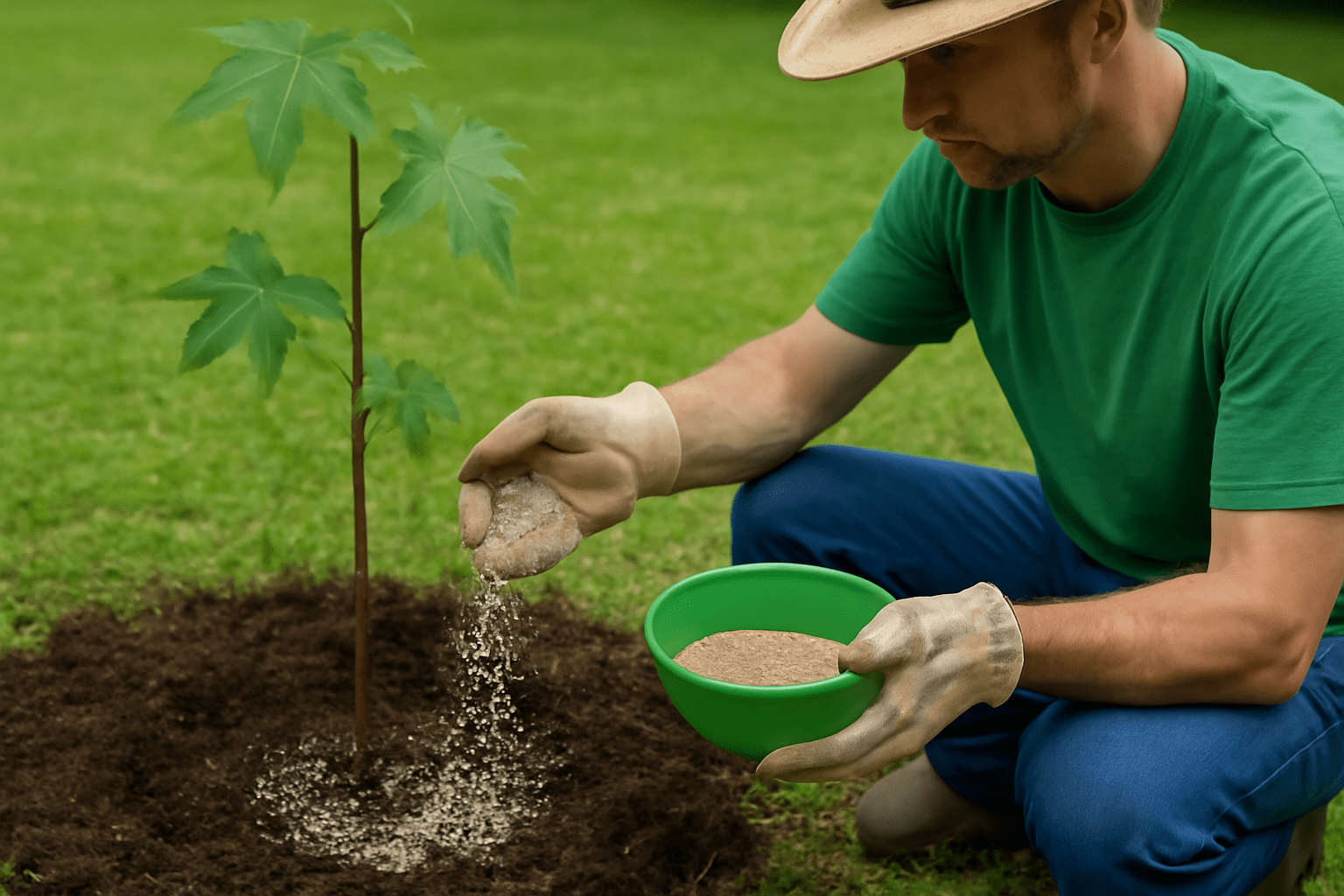
🗓️💧 1. When to Fertilize 💧🗓️
The best times to fertilize your Cherokee Sweetgum Tree 🌳 are early spring 🌸 and fall 🍁.- 🌸 Early Spring: Fertilizing in early spring helps the tree 🌳 kick-start its growing season 🌱, promoting strong new growth 🌿 and healthy leaves 🍃.
- 🍁 Fall: A light application of fertilizer in the fall 🍂 supports the tree 🌳 as it prepares for dormancy 💤 and encourages robust root development 🌱 over the winter ❄️.
- 🚫 Avoid fertilizing in the summer: Pruning too late in the season can encourage new growth 🌱 that might not survive the winter ❄️, leaving the tree vulnerable to cold damage 🌬️.
💡🌱 2. Choosing the Right Fertilizer 🌱💡
The right fertilizer 💧 is crucial to ensuring your tree 🌳 receives the proper nutrients 🌱.- 🌿 Balanced Fertilizer (10-10-10 or 12-12-12): These fertilizers provide equal amounts of nitrogen (N) 🌱, phosphorus (P) 🌿, and potassium (K) 🌳, which are essential for overall tree health 🌿. Nitrogen promotes healthy leaf growth 🌿, phosphorus supports strong root development 🌱, and potassium boosts overall tree resilience 💪.
- 🌱 Organic Options: Organic fertilizers 🌱 like compost 🍂 or well-aged manure 🐄 are excellent choices for feeding your tree 🌳 in a sustainable way ♻️. They slowly release nutrients and improve soil health over time 🌱.
- 💧 Slow-Release Fertilizer: A slow-release formula 🕒 provides a steady supply of nutrients, reducing the risk of over-fertilization 🚫 and minimizing nutrient runoff 🌱.
🛠️🌳 3. How to Apply Fertilizer 🌳🛠️
Proper application of fertilizer 🌱 ensures that your Cherokee Sweetgum Tree 🌳 gets the right nutrients without overfeeding 💧.- 📏 Measure the Fertilizer: Follow the manufacturer’s instructions 📃 on the fertilizer packaging 🏷️. Over-fertilizing 🚫 can harm the tree 🌳, so be sure to apply only the recommended amount 🌱.
- 🌿 Application Around the Tree: Spread the fertilizer evenly around the base 🌳 of the tree 🌳, starting about 6 inches away from the trunk 🌱 and extending to the drip line 🌿 (where the outermost branches end 🌳). Avoid putting fertilizer directly against the trunk 🌳, as this can cause burning 🔥.
- 💧 Water After Application: After fertilizing 🌱, water the tree 🌳 thoroughly 💦. This helps the fertilizer reach the roots 🌱 and prevents it from sitting on the surface 🏜️, which could cause it to evaporate 💨 or wash away 🌧️.
⚠️🌱 4. Signs Your Tree Needs Fertilization 🌱⚠️
It’s important to monitor your Cherokee Sweetgum Tree 🌳 for signs of nutrient deficiencies 🌱. Here’s what to look out for 👀:- 🍂 Yellowing Leaves: Yellowing 🌿, particularly in the older leaves 🍃, is a common sign of nitrogen deficiency 🌱.
- 🌱 Stunted Growth: If the tree 🌳 is growing slowly or the branches appear weak 🌱, it might be lacking in essential nutrients like phosphorus or potassium 🌿.
- 🍁 Poor Fall Color: If the tree’s fall color 🍂 isn’t as vibrant as expected 🌸, it could be a sign of nutrient imbalance ⚖️.
🌱🧪 5. Organic vs. Synthetic Fertilizers 🧪🌱
Both organic 🌿 and synthetic 🧪 fertilizers have their benefits, but each has its role 🌱:- 🌿 Organic Fertilizers: Improve soil health 🌱 over time, provide slow, steady nutrients 🌿, and have fewer risks of over-fertilization 🚫. They’re also better for the environment 🌍, supporting beneficial microbes in the soil 🌱.
- 🧪 Synthetic Fertilizers: Offer quick, concentrated nutrients 🧪, which can help if your tree 🌳 is showing signs of nutrient deficiency 🌱. However, they don’t improve soil structure 🌿 and can lead to nutrient imbalances ⚖️ if used improperly 🌱.
🚫 6. Avoid Over-Fertilizing 🚫
Too much fertilizer 🧪 can cause a range of problems for your Cherokee Sweetgum Tree 🌳:- 🌿 Burned Roots: Over-fertilizing 🚫 can cause the roots to burn 🔥, leading to poor growth 🌱 or even tree death 💀.
- 🍃 Excessive Growth: Too much nitrogen 🌱 can result in excessive leaf growth 🌿, making the tree 🌳 more susceptible to disease 🍄 and pests 🐜.
- ⚖️ Nutrient Imbalance: Overuse of fertilizers 🧪 can lead to an imbalance ⚖️ of essential nutrients, causing long-term harm to the soil 🌍 and tree 🌳.
🌳💪 7. Fertilizer Tips for Success 💪🌳
- 🧪 Test Your Soil: If you’re unsure what nutrients your soil 🌿 needs, consider testing it 🧪. A soil test will give you a clear idea of what’s lacking and how to adjust your fertilizer 🌱.
- 🌿 Mulch to Retain Moisture: After fertilizing 🌳, add mulch 🌾 around the tree 🌳 to retain moisture 💧 and keep the soil temperature stable 🌡️.
- 🌱 Keep an Eye on Growth: Monitor the tree’s growth 🌱 throughout the season 🌸 to ensure it’s responding well to the fertilizer 🌳. Adjust your feeding schedule ⏲️ based on the tree’s health 💚.
🐞🌳 Protecting the Cherokee Sweetgum Tree from Pests and Diseases 🌳🐞
While the Cherokee Sweetgum Tree 🌳 is relatively hardy 🌿, it’s still susceptible to a variety of pests 🐜 and diseases 🦠 that can affect its health and beauty 🌱. By keeping an eye 👀 out for common issues and taking proactive steps 🌿, you can ensure your tree stays healthy 🌳 and vibrant 🌸. Here’s how to protect your Cherokee Sweetgum Tree from potential threats 🛡️.
🐜 1. Common Pests and How to Handle Them 🐜
Several pests 🦠 may try to make a home 🏡 in your Cherokee Sweetgum Tree 🌳. Identifying these pests early 🔍 can help you manage them before they do significant damage 🌱.🍃 Aphids 🐜
- 🌿 Appearance: Small, green or black insects 🦗 that cluster on the undersides of leaves 🍂.
- 🌱 Damage: Aphids suck sap from the leaves 🍃, causing them to curl, yellow 🌿, or drop prematurely 🍂. They also excrete honeydew 🍯, which can attract mold 🍄.
- 💧 Use a strong stream of water 🚿 to wash aphids off the tree 🌳.
- 🌱 Apply insecticidal soap 🧴 or neem oil 🌿 to eliminate aphids without harming the tree 🌳.
🐞 Scale Insects 🐞
- 🌿 Appearance: Tiny, oval-shaped pests 🐜 that appear as bumps on the branches 🌳 or leaves 🍃. They may be brown or white 🤍.
- 🌱 Damage: Scale insects feed on the sap 🍂, leading to yellowing 🍃 or wilting leaves 🍂 and weakening the tree 🌳.
- ✂️ Scrape off scales manually 🧑🌾, especially in early spring when they are still soft 🍃.
- 🌿 Use horticultural oil 🌱 to smother them.
🐛 Caterpillars (e.g., Bagworms) 🐛
- 🌿 Appearance: Larvae 🐛 that feed on leaves 🍃 and create “bags” made of leaves 🌿 and silk 🕸️.
- 🌱 Damage: Bagworms can strip leaves 🌿 and cause severe defoliation 🌳.
- ✋ Hand-pick or remove bags from the tree 🌳.
- 💧 Use Bt (Bacillus thuringiensis) 🌱, a natural insecticide 🧴, to control caterpillar infestations 🐛.
⚠️ 2. Common Diseases and How to Prevent Them ⚠️
Like pests 🐜, diseases 🦠 can also harm your Cherokee Sweetgum Tree 🌳. Keeping the tree healthy 🌱 through proper care 🧑🌾 and taking early action against disease 🌿 will help prevent serious issues 🔧.🍂 Anthracnose 🍂
- 🌿 Appearance: Dark, sunken spots 🌳 on leaves 🍃 and twigs 🌿, often with irregular borders 🌱. Can also cause dieback in branches 🌿.
- 🦠 Cause: A fungal disease 🍄 that thrives in cool, wet conditions 🌧️.
- ✂️ Prune and remove infected branches 🌿 to reduce the spread of the disease 🦠.
- 🧴 Use a fungicide 🦠 labeled for anthracnose control, especially in the spring when the disease is most active 🌿.
- 💧 Water at the base of the tree 🌳 to prevent wetting the foliage 🍃, which encourages fungal growth 🍄.
🦠 Root Rot 🦠
- 🌿 Appearance: Yellowing leaves 🍂, wilting 🌱, and stunted growth 🌳. The tree may suddenly collapse ⚠️.
- 🦠 Cause: Poor drainage or consistently soggy soil 💧, which leads to fungal infections 🦠 in the roots 🌱.
- 🌿 Ensure the tree is planted in well-draining soil 🌱.
- 💧 Avoid overwatering the tree 🌳, as this encourages fungal growth 🍄.
- 🌿 Consider replanting in a better-drained area 🌾 if root rot becomes severe 🌱.
🌱 Powdery Mildew 🌱
- 🌿 Appearance: A white, powdery coating on the leaves 🍃, especially in shaded areas 🌲.
- 🍄 Cause: A fungal disease 🍄 that thrives in humid, low-airflow environments 🌬️.
- ✂️ Prune the tree 🌳 to improve air circulation around the foliage 🍂.
- 🧴 Apply fungicide 🦠 that’s effective against mildew, such as sulfur-based products 🌱.
🌳🛡️ 3. Preventive Measures to Protect Your Tree 🛡️🌳
Prevention is always the best defense when it comes to pests 🦠 and diseases 🦠. Here are some tips to keep your Cherokee Sweetgum Tree healthy 🌿:🔍 Regular Inspections 🔍
Check the tree 🌳 regularly, especially during the growing season 🌸, for signs of pests 🐜 or disease 🦠.- 🍃 Look for unusual changes in leaf color 🌿, spots 🍂, or any visible insects 🦗 on the tree 🌳.
💧 Proper Watering 💧
Deep watering 💦 encourages healthy root growth 🌳 and helps prevent stress 🌱 that can attract pests 🐜 and diseases 🦠.- 🌞 Water in the morning 🌅 to give the tree ample time to dry out before nightfall 🌙, which helps prevent fungal growth 🍄.
🌿 Mulching 🌿
Mulch around the base 🌳 of the tree helps retain moisture 💧 and regulate temperature 🌡️. It also discourages weeds 🌱 that may compete for nutrients 🧑🌾.- However, keep mulch away from the trunk 🌳 to prevent moisture from collecting at the base 🏠, which can encourage rot and pests 🦠.
✂️ Pruning and Clean-Up ✂️
Regularly prune dead, damaged, or diseased branches 🌿. This not only keeps the tree looking neat 🌸 but also prevents the spread of infection 🦠.- 🍂 After pruning ✂️, remove any fallen leaves 🍃 or debris from around the tree 🌳. Diseased material can harbor pests 🦠 and fungi 🍄.
🌱 Choose Resistant Varieties 🌱
Some varieties 🌿 of Cherokee Sweetgum Trees 🌳 may have more resistance to certain pests 🦠 or diseases 🦠. When planting 🌱, check with your local nursery 🏡 to see if disease-resistant varieties are available 🌳.📞 4. When to Call a Professional 📞
If you notice significant pest 🐜 or disease 🦠 damage that you can’t control, it may be time to consult an arborist 🌳 or tree care professional 🧑🔧. They can:- 🧐 Identify the specific problem more accurately 🔍.
- 💡 Recommend the best treatment options 🧴, including targeted pesticides 🦠 or more advanced fungal treatments 🍄.
🍂🌳 Fall Foliage: The Cherry on Top of Your Cherokee Sweetgum Tree 🌳🍂
One of the most enchanting features of the Cherokee Sweetgum Tree 🌳 is its spectacular fall foliage 🍂. As the temperatures drop 🌡️, this tree transforms into a breathtaking display of vibrant colors 🌞, making it a true standout in your yard 🏡. Here’s how to ensure your tree’s fall colors are as stunning as possible 🍁.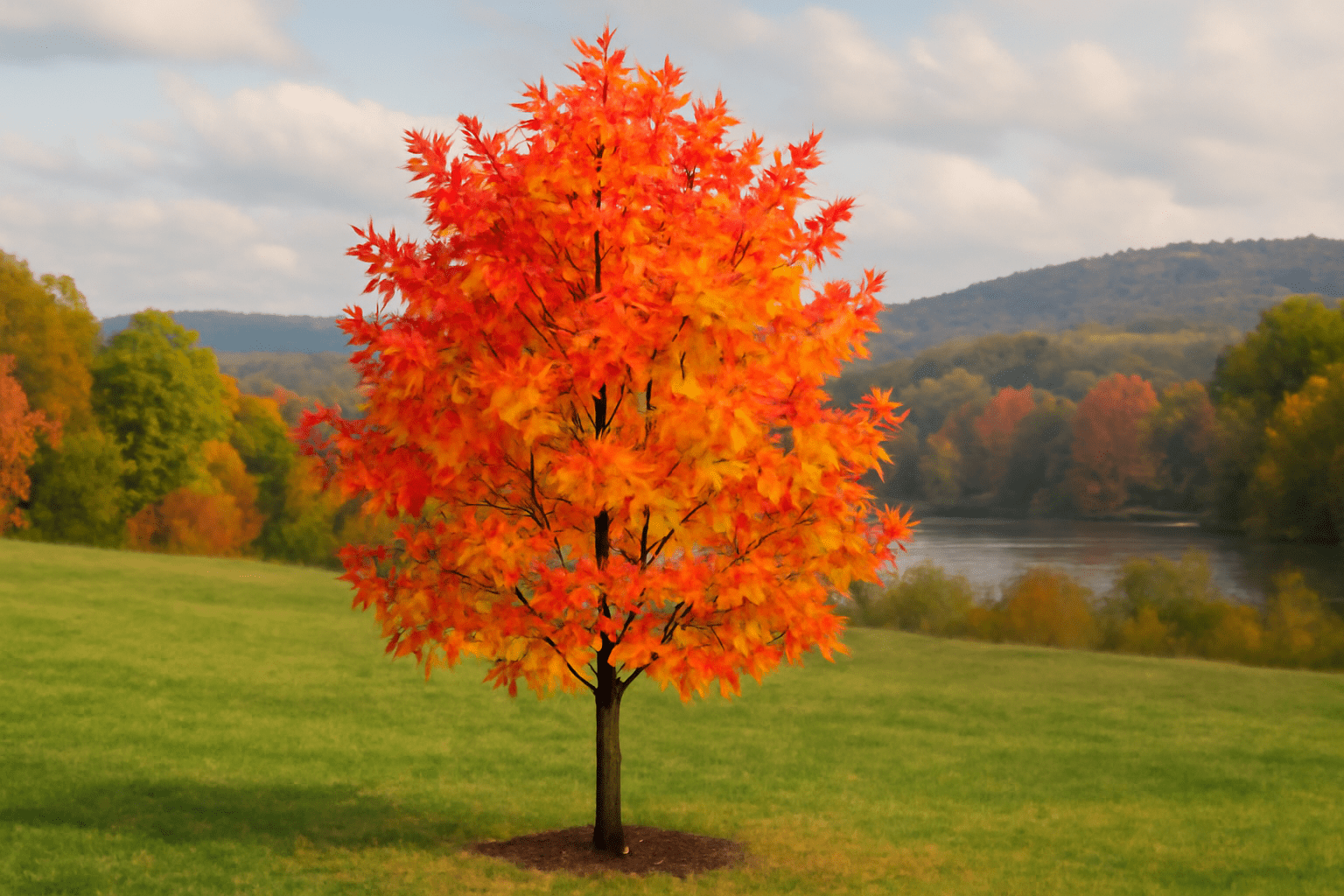
🍁 1. The Magic of Fall Colors 🍁
The Cherokee Sweetgum Tree 🌳 is famous for its stunning, multi-colored fall foliage 🍂. As the days get shorter 🌅 and cooler ❄️, the tree’s star-shaped leaves 🍃 turn brilliant shades of red 🔴, orange 🟧, yellow 🟨, and sometimes even purple 🟪, creating a striking and colorful autumn display 🍂. The transition from green 🍃 to these fiery hues 🔥 is what makes the Cherokee Sweetgum Tree 🌳 such a prized ornamental tree 🌿.- 🌱 Why It Happens: The shift in leaf color 🍃 occurs as the tree slows its growth 🌳 and begins preparing for winter ❄️. The green chlorophyll in the leaves 🌿 breaks down, revealing the underlying pigments (carotenoids and anthocyanins) that produce the vibrant fall colors 🍂.
🌞🍂 2. How to Encourage Vibrant Fall Colors 🍂🌞
If you want your Cherokee Sweetgum Tree 🌳 to put on the best show of fall colors 🍁, there are a few key factors to consider 🌱.🌿 Stress the Tree (in Moderation) 🌿
To help bring out the brightest colors 🔴, gently stress the tree 🌳 by slightly limiting its water intake 💧 in late summer to early fall 🍁. This stress encourages the tree 🌳 to produce more anthocyanins 🟪, the pigments responsible for the rich red 🔴 and purple 🟪 hues.- 🌱 How to Stress the Tree: Reduce watering 💦 during late summer once the tree has established itself 🌳. Just make sure not to overdo it—too much stress 🌱 can harm the tree 🌳, so avoid drought-like conditions 🌵.
🌡️ Ideal Temperature 🌡️
Cooler nights 🌙 and warm, sunny days 🌞 contribute to the best fall color 🌿. While you can’t control the weather 🌦️, choosing a site that gets plenty of sun ☀️ during the day will help your tree thrive 🌳 and create those vibrant hues 🍁 when autumn arrives 🍂.🧑🌾 Proper Nutrition 🧑🌾
A tree 🌳 that is well-fed throughout the growing season 🌱 will have more energy ⚡ to display stunning fall foliage 🍂. Ensure that your Cherokee Sweetgum Tree 🌳 gets adequate nutrients from proper fertilization 🧪 and good soil health 🌱. However, avoid high-nitrogen fertilizers 🧴 in late summer, as they encourage new leaf growth 🌿 instead of supporting the fall color change 🍁.☀️❄️ 3. The Role of Weather ☀️❄️
While your care efforts 🌿 play a big role, weather conditions 🌦️ also heavily influence the fall color display 🍂 of your Cherokee Sweetgum Tree 🌳. Here’s how weather impacts the process 🌿:- 🌙 Cool Nights: For the best colors 🌈, aim for cooler nighttime temperatures (between 40°F and 50°F) 🌙 with warm, sunny days 🌞. This combination helps the tree’s leaves 🍃 produce anthocyanins 🟪, enhancing red 🔴 and purple 🟪 shades.
- 🌧️ Frost: Be aware that early frosts ❄️ can damage the leaves 🍂 and cause them to fall prematurely 🍃 before they reach their full color potential 🍁. Monitor weather forecasts 📅 and prepare for any unexpected cold snaps 🥶.
🍂🧹 4. What to Do with Fallen Leaves 🍂🧹
After the leaves 🍂 of your Cherokee Sweetgum Tree 🌳 have fallen, you may wonder what to do with the beautiful carpet 🧺 of colorful leaves 🍃 covering your yard 🏡.- 🌿 Mulch: Use the fallen leaves 🍂 as mulch around your garden beds 🌾. Shredded leaves 🍃 help retain moisture 💧, regulate temperature 🌡️, and break down over time to enrich the soil 🌱.
- 🧑🌾 Compost: Add the leaves 🍂 to your compost pile 🌱 to create nutrient-rich compost 🍃 for your garden 🌿. Make sure to balance the brown leaves 🍂 with green material (like grass clippings 🌱) for healthy composting 🍂.
- 🦋 Leave Them for Wildlife: Fallen leaves 🍂 can also provide shelter for insects 🦗 and small creatures 🦔. If you have a natural garden 🌱 or woodland area 🌳, you may want to leave some leaves 🍂 undisturbed to encourage local wildlife 🦅.
❄️🌳 5. Extended Beauty in Winter ❄️🌳
While fall 🍂 is when the Cherokee Sweetgum Tree 🌳 shows off its stunning colors 🍁, its beauty doesn’t end when the leaves 🍂 fall. The tree’s twisted, spiky seed pods (often referred to as “gumballs” 🟤) remain on the branches 🌳 throughout the winter ❄️, offering texture 🌾 and interest in the colder months 🌨️.- 🌳 Winter Interest: These seed pods 🌰 add visual interest 👀 and provide food 🍽️ for wildlife 🦜, especially birds 🐦. Their unique shape 🌿 and texture 🌳 make your tree stand out even when the branches are bare 🌲.
🛑🍁 6. Common Fall Color Problems 🛑🍁
Occasionally, your Cherokee Sweetgum Tree 🌳 might not achieve the vibrant fall colors 🍂 you expect 🌱. Here are some reasons why that might happen 🌾:- 🧴 Too Much Nitrogen: Excess nitrogen 🧪 from fertilizers 🧴 can delay or dull the fall color display 🍁. If you’ve over-fertilized with high-nitrogen products ⚠️, consider reducing the amount of fertilizer next year 🌿.
- 🌞 Heat Stress: Extreme heat 🌞 during late summer can stress the tree 🌳 and affect its ability to produce vibrant fall colors 🍂. Proper watering 💧 and care 🧑🌾 during the growing season 🌱 can help prevent this 🌿.
⚠️🌳 Common Issues with Cherokee Sweetgum Trees and How to Solve Them 🌳⚠️
While the Cherokee Sweetgum Tree 🌳 is generally a hardy and beautiful tree 🌿, it can sometimes face challenges that can impact its growth 🌱, health ❤️, and appearance 🌳. Understanding these issues and knowing how to address them 🧑🌾 will help you keep your tree thriving 🌱 for years to come 🌳. Below are some common problems with Cherokee Sweetgum Trees 🌳 and how to resolve them 💧.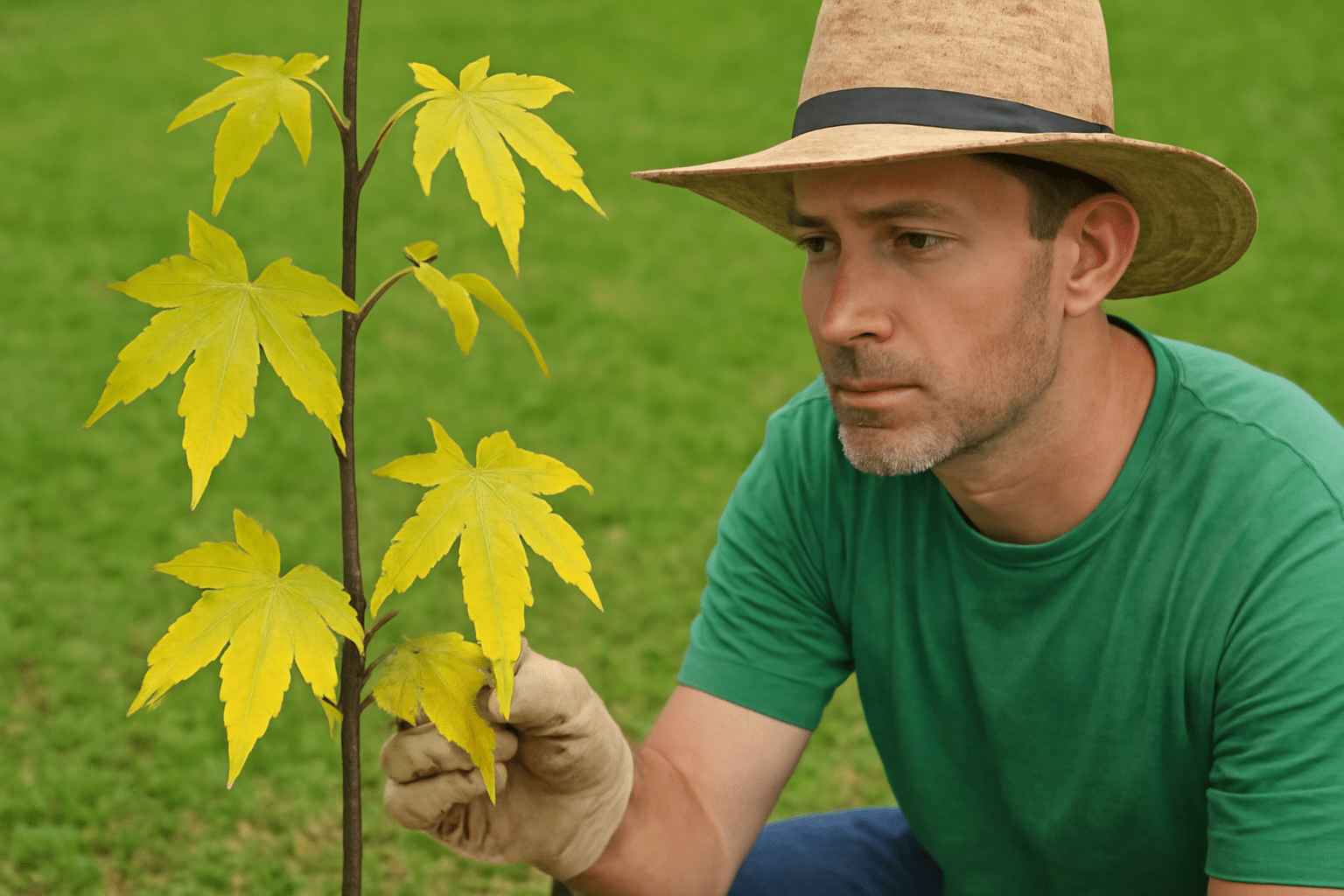
🍂 1. Yellowing Leaves 🍂
Yellowing leaves 🍃 are a common issue for many trees 🌳, and the Cherokee Sweetgum Tree 🌳 is no exception 🌱. If the leaves 🍂 of your tree 🌳 are turning yellow 🍁, it could be a sign of several underlying problems 🌿.Possible Causes:
- 🌱 Nutrient Deficiency: A lack of nitrogen is the most common cause of yellowing leaves 🍂. This can be especially noticeable in older leaves 🍃, which lose their green color 🍀 while younger leaves remain unaffected 🌿.
- 💧 Overwatering: Consistently wet soil 💦 can lead to yellowing leaves 🍂, as roots become deprived of oxygen 🌱, causing stress 🌿 to the tree 🌳.
- 🌾 Poor Drainage: Clay-heavy or compacted soils 🌾 that don’t drain well 🌱 can also lead to yellowing leaves 🍃.
How to Solve It:
- 🧑🌾 Fertilize with a Balanced Fertilizer: If nutrient deficiency is the cause 🌱, use a balanced fertilizer (10-10-10 or 12-12-12) to provide the necessary nutrients 💧.
- 💦 Check Watering Practices: Ensure you’re watering properly 🌳. Water deeply and infrequently 💧 rather than shallow, frequent watering 🌿. Let the soil dry out slightly between waterings 💧.
- 🌱 Improve Drainage: If your soil has poor drainage 🌾, amend it with organic matter like compost 🪴 to improve its structure and ensure better water flow 💦.
🌱 2. Stunted Growth 🌱
If your Cherokee Sweetgum Tree 🌳 is growing slowly 🌿 or not producing as much new growth 🌱 as expected, it could be a sign of underlying issues 🌱.Possible Causes:
- 🌿 Nutrient Imbalance: A lack of essential nutrients 🌱, particularly nitrogen or potassium, can stunt growth 🌳.
- 💧 Root Stress: Poor root development 🌱 due to overwatering 💦 or compacted soil 🌿 can restrict the tree’s growth 🌱.
- 🌞 Insufficient Sunlight: The tree 🌳 may not be getting enough sunlight ☀️, which is crucial for healthy growth 🌱 and vibrant foliage 🍃.
How to Solve It:
- 🧑🌾 Fertilize Appropriately: Apply a slow-release fertilizer in the spring 🌸 to encourage strong growth 🌳. Ensure the fertilizer has a balanced mix of nitrogen, phosphorus, and potassium 🌱.
- 💧 Water Properly: Ensure your tree is well-watered 💦 but not overwatered 🌿. Consistent moisture 💧 is key for root development 🌱.
- 🌞 Relocate the Tree (if possible): If your tree 🌳 is shaded by buildings 🏠 or other trees 🌳, consider moving it to a sunnier spot 🌞 to encourage better growth 🌱.
🍂 3. Premature Leaf Drop 🍂
While Cherokee Sweetgum Trees 🌳 naturally lose their leaves 🍃 in the fall 🍂, premature leaf drop 🍁 can be a sign of stress 🌱 or health issues 🩺.Possible Causes:
- 💧 Drought Stress: A lack of water 💦, particularly during hot summer months 🌞, can cause the tree 🌳 to shed its leaves 🍂 prematurely.
- 🦠 Pests or Disease: Insects 🐜 like aphids 🦗 or fungal diseases 🍄 like anthracnose can cause early leaf drop 🍂.
- 🧴 Overfertilization: Excess nitrogen 🧪 or overuse of fertilizers 🧴 can lead to excessive leaf growth 🍃, making the tree 🌳 vulnerable to premature leaf loss 🍂.
How to Solve It:
- 💦 Water Consistently: Ensure the tree 🌳 gets deep watering 💧 during dry spells, particularly in summer 🌞 when it needs moisture most 💦.
- 🦠 Check for Pests or Diseases: Inspect the tree 🌳 for signs of pests 🐜 or fungal infections 🍄. Treat accordingly with organic pest control methods 🌱 (like neem oil) or fungicides 🧴.
- 🚫 Avoid Overfertilizing: Reduce fertilizer application 🧪, especially in the late summer 🌞. This will help avoid excessive leaf growth 🍂 and reduce the risk of premature leaf drop 🍃.
🐜 4. Insect Infestations 🐜
Pests 🐜 are a common issue for Cherokee Sweetgum Trees 🌳, with aphids 🦗, scale insects 🐞, and bagworms 🐛 being the most frequent offenders 🦠.Possible Causes:
- 🦗 Aphids: These small green or black insects 🐜 suck the sap from the leaves 🍂 and excrete a sticky substance called honeydew 🍯, which can attract mold 🍄.
- 🐞 Scale Insects: These tiny, oval-shaped pests 🦠 can be found on branches 🌿 and leaves 🍃, sucking the tree’s sap 🌳.
- 🐛 Bagworms: These caterpillars 🐛 create protective bags 👜 from leaves 🌿 and silk 🕸️, feeding on foliage 🍃 and weakening the tree 🌳.
How to Solve It:
- 🦗 For Aphids: Spray the tree 🌳 with a strong stream of water 💦 to dislodge the aphids 🦗. You can also apply neem oil 🌱 or insecticidal soap 🧴.
- 🐞 For Scale Insects: Scrape the scales off with a soft brush 🌿 or use horticultural oil 🌱 to smother them 🌳.
- 🐛 For Bagworms: Remove bags 👜 by hand ✋, and treat with Bt (Bacillus thuringiensis) 🌿, a natural pesticide 🧴 that targets caterpillars 🐛.
🌿 5. Anthracnose (Leaf Spot Disease) 🌿
Anthracnose 🍂 is a common fungal disease 🍄 that affects many trees 🌳, including the Cherokee Sweetgum Tree 🌳. It causes dark, sunken spots 🌿 on leaves 🍃 and twigs 🌱, often leading to defoliation 🍂 and reduced vigor 🌱.Possible Causes:
- 🌧️ Cool, Wet Conditions: Anthracnose thrives in humid 🌧️, wet conditions, especially in spring 🌱 and early summer 🌞.
- 🏚️ Damaged or Stressed Trees: Trees under stress 🌱 due to poor water management 💧, nutrient deficiency 🧪, or mechanical injury 🚧 are more susceptible to fungal infections 🍄.
How to Solve It:
- ✂️ Prune Infected Areas: Remove and discard infected branches 🌿 and leaves 🍂 to prevent the spread of the fungus 🍄.
- 🧴 Fungicide Treatment: Apply a fungicide 🧴 labeled for anthracnose in early spring 🌸 before new growth appears 🌿.
- 🌬️ Improve Air Circulation: Thin the tree’s canopy 🌳 to promote better airflow 🌬️, reducing humidity around the leaves 🍃 and minimizing disease conditions 🍄.
🦠 6. Root Rot 🦠
Root rot 🦠 is a serious issue that can quickly damage your Cherokee Sweetgum Tree 🌳, often caused by waterlogged soil 💧 or poor drainage 🏚️.Possible Causes:
- 🌱 Poor Drainage: Soil that doesn’t drain well 🌾 can lead to stagnant water around the roots 🌳, causing fungal infections 🦠 like root rot.
- 💦 Overwatering: Consistently wet soil 💧 from overwatering 💦 can drown the roots 🌱, leading to root rot 🦠 and tree decline 🌳.
How to Solve It:
- 🌱 Ensure Proper Drainage: If the tree’s roots 🌳 are sitting in water 💧, amend the soil 🌿 with organic matter 🪴 to improve drainage or consider relocating the tree 🌳 to a better-drained area 🌿.
- 💧 Water Properly: Water deeply 💦 but infrequently 🌱, allowing the soil 🌾 to dry slightly between waterings 💧. Avoid letting the tree 🌳 sit in standing water 🌊.
🌿🌳 Final Thoughts on Caring for Your Cherokee Sweetgum Tree 🌳🌿
The Cherokee Sweetgum Tree is an incredible addition to any landscape, offering stunning beauty throughout the year—especially with its vibrant fall foliage. By understanding the needs of this tree and addressing common challenges such as pests, diseases, and proper care, you can enjoy a thriving, healthy tree for years to come.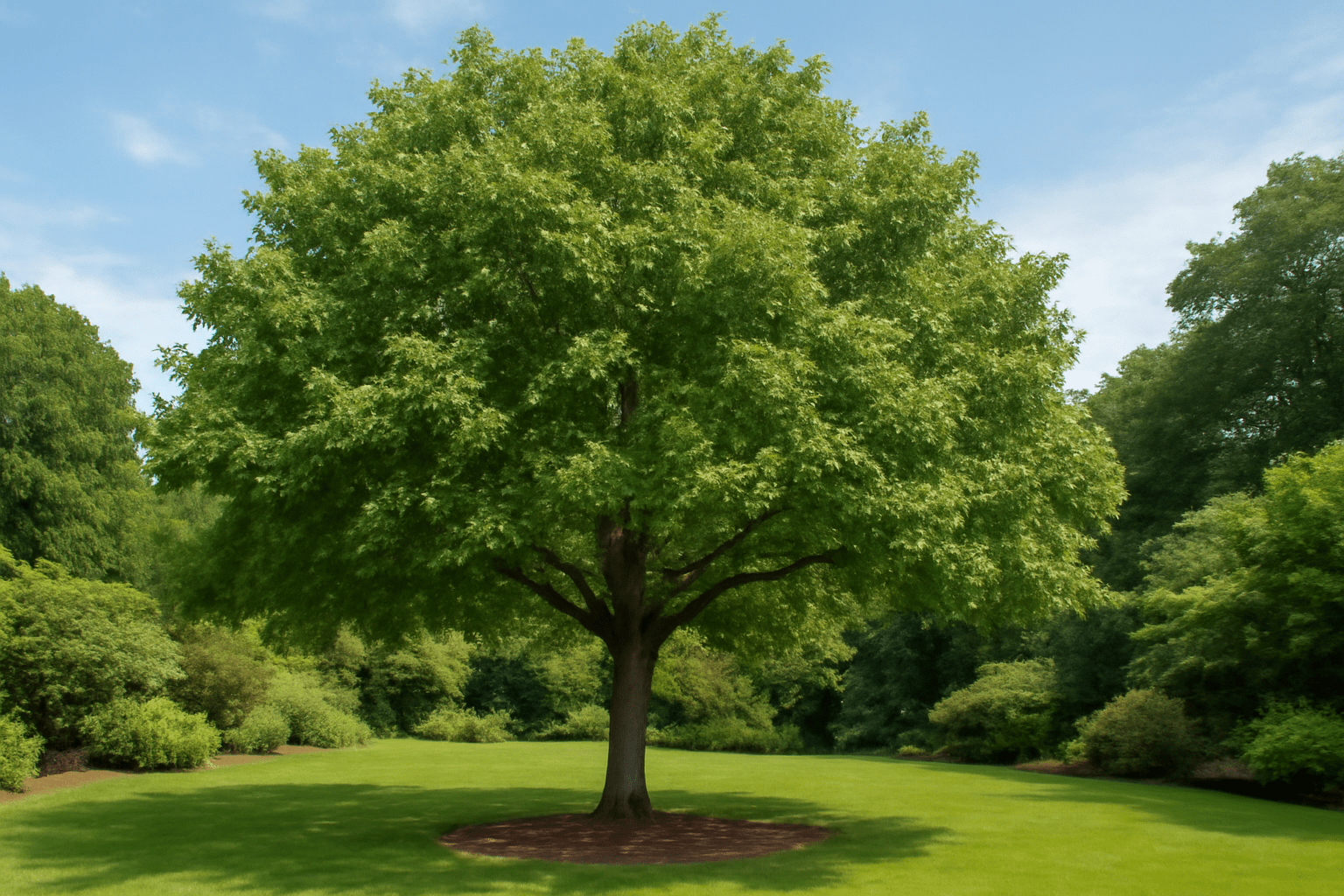
Frequently Asked Questions (FAQ)
How fast does the Cherokee Sweetgum Tree grow?
The Cherokee Sweetgum Tree grows at a moderate rate, averaging 1 to 2 feet per year under optimal conditions. With proper care, it can reach its full height of 50 to 60 feet in about 30 to 40 years.
What is the best time to plant a Cherokee Sweetgum Tree?
The best time to plant a Cherokee Sweetgum Tree is in early spring or fall, when temperatures are cooler. This allows the tree to establish its roots before the extreme heat of summer or the cold of winter sets in.
How much sunlight does a Cherokee Sweetgum Tree need?
Cherokee Sweetgum Trees thrive in full sun, meaning they need at least 6 hours of direct sunlight each day to grow strong and produce vibrant fall colors. A sunny location helps the tree produce the energy it needs to stay healthy.
How often should I water my Cherokee Sweetgum Tree?
For newly planted Cherokee Sweetgum Trees, water them once a week during dry periods to help establish their roots. Once mature, water deeply every 2 weeks during hot months, adjusting based on rainfall and soil conditions.
What type of soil is best for a Cherokee Sweetgum Tree?
Cherokee Sweetgum Trees prefer well-draining soil that is slightly acidic to neutral. If your soil is heavy or clayey, amend it with organic matter to improve drainage and root development.
Why are the leaves on my Cherokee Sweetgum Tree turning yellow?
Yellowing leaves on your Cherokee Sweetgum Tree can be a sign of nutrient deficiency, particularly a lack of nitrogen. It can also be caused by overwatering or poor drainage. Apply a balanced fertilizer and ensure proper watering habits to resolve the issue.
How do I prevent pests and diseases on my Cherokee Sweetgum Tree?
To prevent pests like aphids and scale insects, regularly inspect your tree for signs of infestations and treat with neem oil or insecticidal soap. To prevent fungal diseases like anthracnose, ensure proper airflow through the tree by pruning regularly and avoid watering the foliage.
When does the Cherokee Sweetgum Tree's fall foliage reach its peak color?
The Cherokee Sweetgum Tree’s fall foliage typically reaches its peak in mid to late October. The tree’s leaves turn vibrant shades of red, orange, yellow, and sometimes even purple, depending on the weather conditions and stress level of the tree. Cool nights and sunny days help bring out the best colors.
